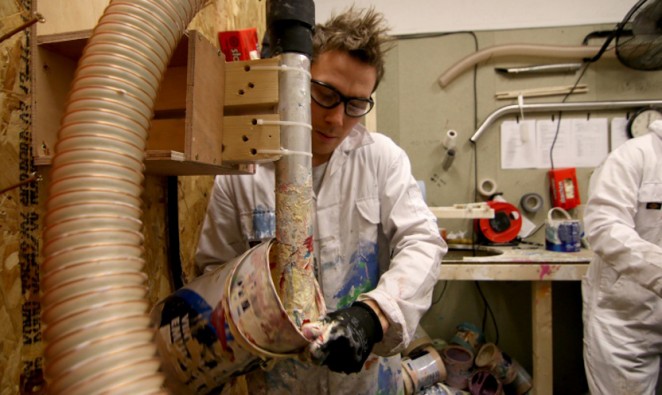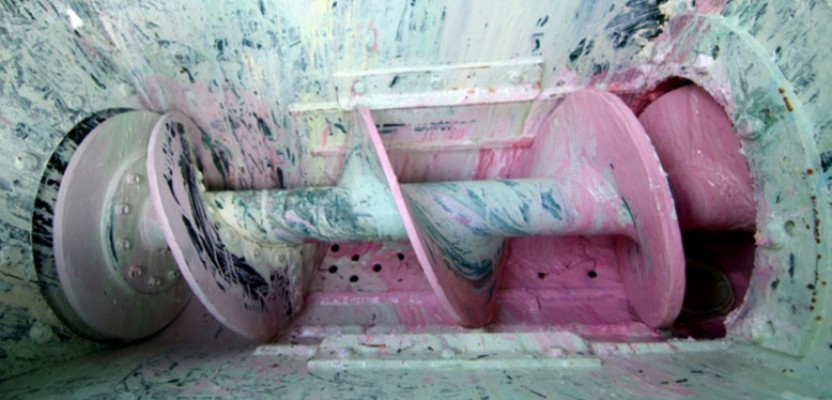Up until now, recycling paint has always been a laborious and costly process, but thanks to a new collaboration between Dulux-owner AkzoNobel, design and innovation company Seymourpowell, and award-winning eco paint brand Newlife Paints, paint recycling might finally be making its way into the mainstream design world. The project is based on a new technology developed by Seymourpowell that allows paint to be recycled more cost-effectively and on a mass scale. The consultancy’s technology, based on the concept of a vacuum cleaner, mechanises the process of decanting unused paint from tins, which if used commercially would help both to save resources and reduce landfill.
"Seymourpowell managed to combine creativity with technical ingenuity to create a really effective new solution for recycling paint"
AkzoNobel initially teamed up with paint chemist Keith Harrison to tackle the problem of huge amounts of paint being wasted each year. Over 400 million litres of paint is sold annually in the UK but 13% of it remains unused, amounting to 55 million litres wasted in total, according to Seymourpowell. Harrison had already developed a technique of re-engineering used paint into a recycled paint product. Seymourpowell’s brief was then to create machinery and technology that would allow a technically and commercially viable way of scaling up Harrison’s recycling process.

The consultancy experimented with different technologies, including high-pressure air jets, vibrations, crushing and squeezing the paint tins, and a large “Worm-screw” device that crushed tins and drained paint at the same time. An industrial vacuum cleaner, however, proved to be the quickest and most efficient means of extracting unused paint. Seymourpowell developed and adapted the suction technology and created a large prototype that could be used on an industrial scale. The concept was then trialled with waste management company Veolia and proved to allow paint to be recycled four times faster and at one-seventh of the cost of previous methods. It also leaves tins clean enough to be recycled straight away and is cost-effective to scale up.
"This project has been really rewarding to work on because we’re creating a real, live example of a circular economy"
Chris Sherwin, Sustainability Consultant at Seymourpowell, said: “One of the major technical problems with recycling paint is that it’s very difficult to decant from tins. The process is labour-intensive and expensive because it all has to be done by hand. Our first challenge was to discover the very best way of harvesting all of the unused paint in the most cost-effective way so we started by setting up a paint recycling station in our workshop. AkzoNobel’s Resource Efficiency Manager, David Cornish, added: “Redesigning the way paint gets recycled is fraught with challenges, but Seymourpowell managed to combine creativity with technical ingenuity to create a really effective new solution. This is certainly helping turn our circular economy strategy into a reality.”

Seymourpowell plans to develop the technology further alongside AkzoNobel and Newlife Paints, as well as a smaller paint suction prototype for smaller scale paint recycling operations. The consultancy has not yet confirmed how the collection process for used tins would work, but the companies expect to release further details of progress later in 2016 and beyond. Sherwin added: “We discovered significant interest from customers and this is being taken forward by AkzoNobel. We’re also planning to develop a smaller paint suction prototype for smaller paint recycling operations too. This project has been really rewarding to work on because we’re creating a real, live example of a circular economy and because this is such a fledgling process.”








Mitchell August 3rd, 2016, around noon
Brilliant ingenuity applied to problem-solving with both ecological as well financial benefits.